Spinning the RV-14
First of all, I'm just beginning with aerobatics. Yeah, I've done plenty of rolls in my life, but I mean something more complicated than a simple aileron roll. So don't read anything here and consider me an expert. All of this stuff is at your own risk. And when I say risk, there is always a risk. I had a friend of mine fly with me in the RV-14, who had a small amount of time in an Extra 300, who wanted to do a roll in the RV-14. I ran thru a couple of rolls, talking thru all of the steps, and showing and doing. To me it was perfectly clear. Unfortunately, due to a mis-communication, when he took the controls and did the roll, within a couple seconds we were pointed straight at the ground, and I said "I think I'll take it from here" and recovered from the accidental split-S. The RV's pick up a LOT of speed when going straight down, especially when you have the power on, intending to do an aileron roll, rather than powered back. The recovery involved speeds of nearly VNE, and a subsequent 4.1G steady pull to get out of the dive and return to level. This taught me an important few lessons:1) Sometimes it looks easy, but isn't
2) Don't trust anyone to do the right thing...keep your guard up
3) I'm glad I am not a "freezer"
4) Stay cool, be quick but don't rush/panic
5) Just because your maneuvers have all gone well doesn't mean they always will
So with this in mind, it's time to add a bit more to the discussion on aerobatics.
Earlier I did my aerobatics sans-chute. Sadly, finishing the airplane costs some money, and I didn't have any right away. Actually I still don't, but that's how it goes. If someone asks you how much money it costs to build an RV, I have the one definitive answer...
For both my RV-10 and my RV-14, my answer is: "All of it."
A while back I had ordered myself a couple of Para-Phernalia Mini Softie parachutes, because that's really what you should do, and while the regs allow you to do aerobatics without a chute while alone, if there is more than one person in the plane then both the pilot and co-pilot (and any other passengers) also need chutes.
With this in mind, it was important to get chutes that would fit my whole family's range of size...all the way from OFB (Ol' fat boy) me, to the vertically handicapped wife and daughter I have. The parachute order is as follows:
16" wide container for myself...Allows for a thinner back layer.
15" Wide container for the 2nd chute...gives a thicker back.
My wife and daughter both need plenty of extra seat tilt than the normal RV-14 allows. They need a full 4" block of foam behind the seat back to elevate it enough, and 3" thick blocks on the rudder pedals to reach. So for them, the thicker chute works great. I did buy 2 of the 240lb versions of chute, despite them being small. This keeps it flexible to be used with other OFB's like myself. For my chute, I need to remove the seat back cushion to fit in the RV-14, and to be quite honest, while the RV-14 fits bigger pilots, I could still use a couple more inches of recline to the seats, when wearing a chute. So the 16" at least helps with that situation a bit.
See far below for pictures of our chutes. I hope they never are used. I'm not sure that they'd even float us down, since they're made of gold. They must be made of gold...they cost enough. :)
So far I've been happy and lucky enough that although I've screwed up a couple of maneuvers, none of them kept the airplane from flying, but I wanted to be better prepared for the time when the unexpected happens. This means spin recovery time. So with that in mind, it was time to spin the RV-14. The only other plane I've ever been in a spin in, is a Citabria, a long time ago, with a CFI. For the RV-14, it would be a new experience, but as I found out, it isn't bad at all. The RV-14 spins easily with just pro-spin rudder input, but it also recovers very easily with just opposite rudder. In fact, I found that I had to be careful not to use full opposite rudder because the rudder is just too effective to use full opposite, for most spins.
Here's a video showing some spins in both directions. I entered them with the power pulled way back, waited for the brink of the stall, full rudder with neutral aileron, and then it spun. With the power already pulled back and the aileron already neutral, the recovery was basically just via rudder, and it did not require a bunch of nose down elevator to get it flying again. It does feel like it could wind up quick, with the wrong inputs. Also, for recovery, I found that recovery took between 200 and 500' in general.
This leads me to other other aspect of spins...fear. Many people I know are afraid of spins. Honestly, I was a little too. Not so much afraid of doing them but afraid of not knowing exactly how the RV-14 would behave and recover. But many people are afraid of getting into a spin. I think this is brought on by stall training in primary flight training. It's at that time that it's driven into the student's mind that "Spins are what kill lots of pilots, especially when turning final", and "Keep the ball centered during a stall or you can inadvertently spin". Either way, spins are taught in a way that plants the fear in the student and makes them believe spins lead to nearly certain death. And, since a stall must happen to spin, that same feeling is carried over to stalls.
Stalls, in the RV's, are especially benign. There is LOTS of pre-stall buffeting of the wings, to warn the pilot of an impending stall, and when it does still, there is no huge nose drop like a cessna experiences. In fact, you may be fully stalled, descending at 2000fpm, with your nose high. It may or may not roll off on a wing, but almost always, recovery will happen if the person just lets off any back pressure on the stick. They recover very easily and fly right out of the stall.
Back a few years ago, one of my kids did a science presentation of wing stalls in an airplane so we went out and tufted the wing and demonstrated it. This is the resulting video of that flight. It's pretty neat to see the airflow begin to be disturbed, and you can even see the airflow reverse over the wing in some places.
It's a neat little demonstration.
Here are some pics of the mini-softie chutes, and a couple of a farm field with a corn maze that we happened to see while turning downwind to land.
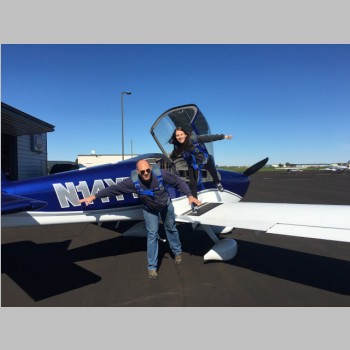
|
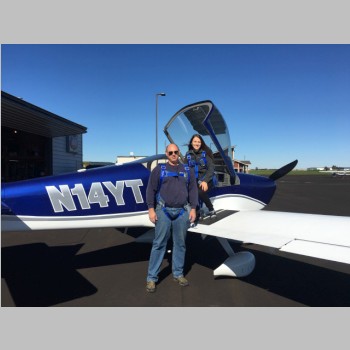
|
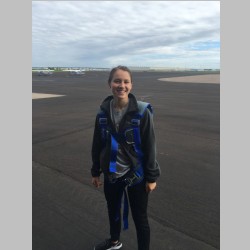 |
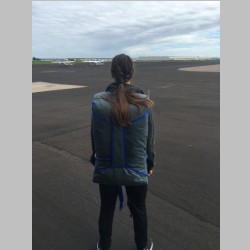 |
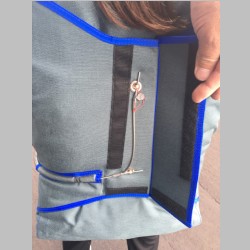 |
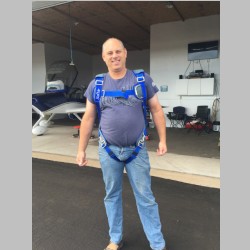 |
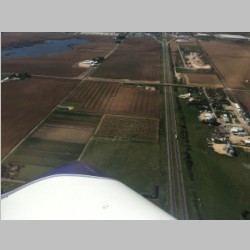 |
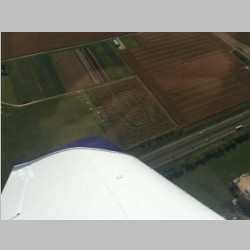 |